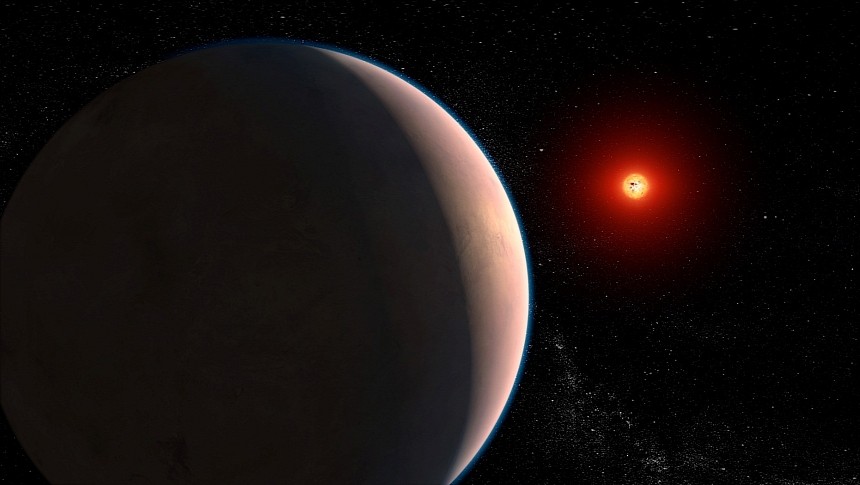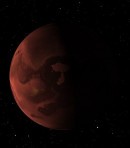You don't have to be a scientist to understand that water is essential for the existence of life as we know it. In its liquid form, it is not only one of life's building blocks but one of its fuel sources. And that's why when looking at faraway worlds, water is always on the list of things to be on the lookout for.
The still recently launched James Webb Space Telescope (JWST) is looking for that as well, among its many other tasks. And traces of water it found in several distant places, most recently somewhere common sense tells you water should not really exist: either on a star, or on the very hot nearby planet.
So, the story goes a bit like these: Webb was recently pointed at a super Earth exoplanet called GJ 486 b. Almost three times the size of our own ball of wonder, the rocky planet orbits a red dwarf located 26 light years from Earth.
Because the planet spins around its star at a distance of just 0.01734 astronomical units, meaning it takes it just 1.5 days to complete an orbit, it's a very hot place, with temperatures reaching 800 degrees Fahrenheit (430 degrees Celsius). It's also bombarded by ultraviolet and X-ray radiation from the red dwarf, and all of the above means there are slim chances of the place being able to sustain an atmosphere.
And yet Webb and its mighty instruments found traces of water around this mighty star-planet duo. Scientists looking at this data say water vapor presence in the area means that either the planet can sustain some kind of atmosphere, despite the harsh conditions, or that water vapor comes from the star itself.
That's right, as strange as it may sound, it turns out red dwarfs, in their more cooler spots, could be home to water vapor. In fact, even our own Sun at times presents water vapor in its spots, and since the red dwarf is overall much cooler than the Sun, it has a higher chance of producing water vapor.
The discovery is important to scientists because of the first possibility, though. We know that water vapor exists on gaseous exoplanets, but to date no rocky exoplanet has been confirmed to have an atmosphere with the stuff before, and this could be a major leap forward.
Its presence in the upper layers of the planet's atmosphere could also point to the existence of volcanoes on the surface, which could be the source of the water vapor, going up in the form of steam.
Webb will be pointed at GJ 486 b again, as scientists hope to unlock more of the planet's mysteries. Future observations will also help find the culprit for the vapor's presence there.
So, the story goes a bit like these: Webb was recently pointed at a super Earth exoplanet called GJ 486 b. Almost three times the size of our own ball of wonder, the rocky planet orbits a red dwarf located 26 light years from Earth.
Because the planet spins around its star at a distance of just 0.01734 astronomical units, meaning it takes it just 1.5 days to complete an orbit, it's a very hot place, with temperatures reaching 800 degrees Fahrenheit (430 degrees Celsius). It's also bombarded by ultraviolet and X-ray radiation from the red dwarf, and all of the above means there are slim chances of the place being able to sustain an atmosphere.
And yet Webb and its mighty instruments found traces of water around this mighty star-planet duo. Scientists looking at this data say water vapor presence in the area means that either the planet can sustain some kind of atmosphere, despite the harsh conditions, or that water vapor comes from the star itself.
That's right, as strange as it may sound, it turns out red dwarfs, in their more cooler spots, could be home to water vapor. In fact, even our own Sun at times presents water vapor in its spots, and since the red dwarf is overall much cooler than the Sun, it has a higher chance of producing water vapor.
The discovery is important to scientists because of the first possibility, though. We know that water vapor exists on gaseous exoplanets, but to date no rocky exoplanet has been confirmed to have an atmosphere with the stuff before, and this could be a major leap forward.
Its presence in the upper layers of the planet's atmosphere could also point to the existence of volcanoes on the surface, which could be the source of the water vapor, going up in the form of steam.
Webb will be pointed at GJ 486 b again, as scientists hope to unlock more of the planet's mysteries. Future observations will also help find the culprit for the vapor's presence there.






